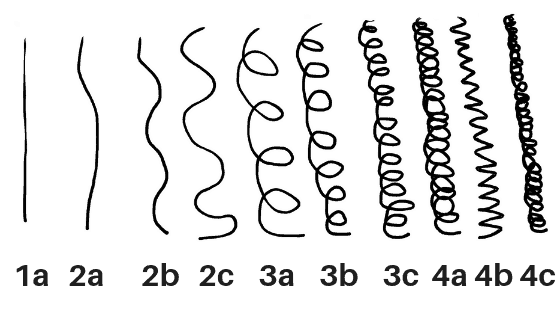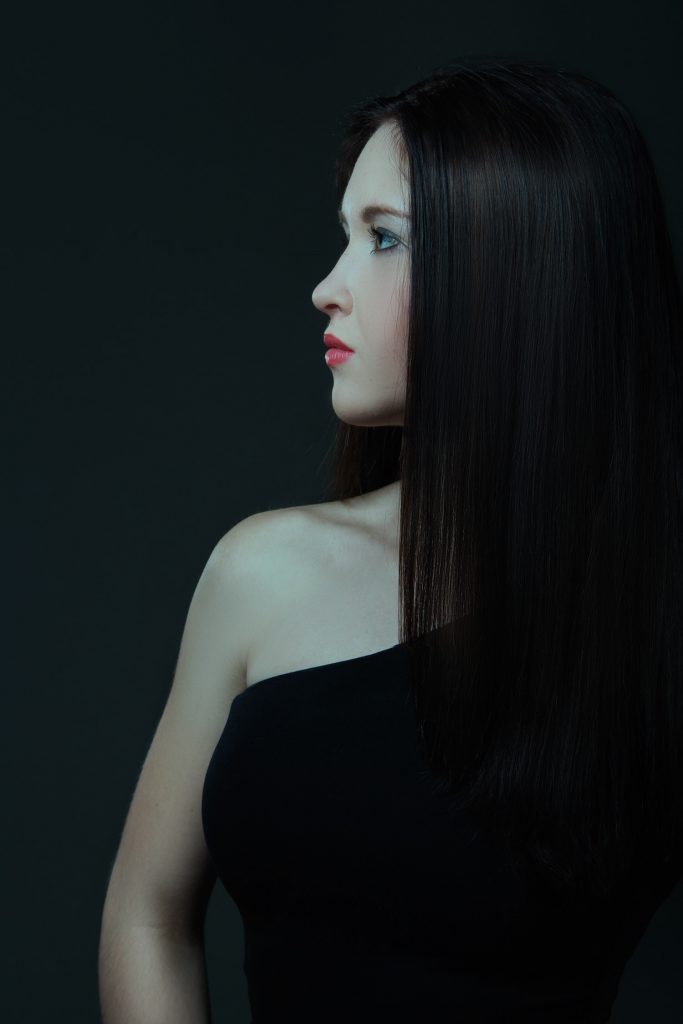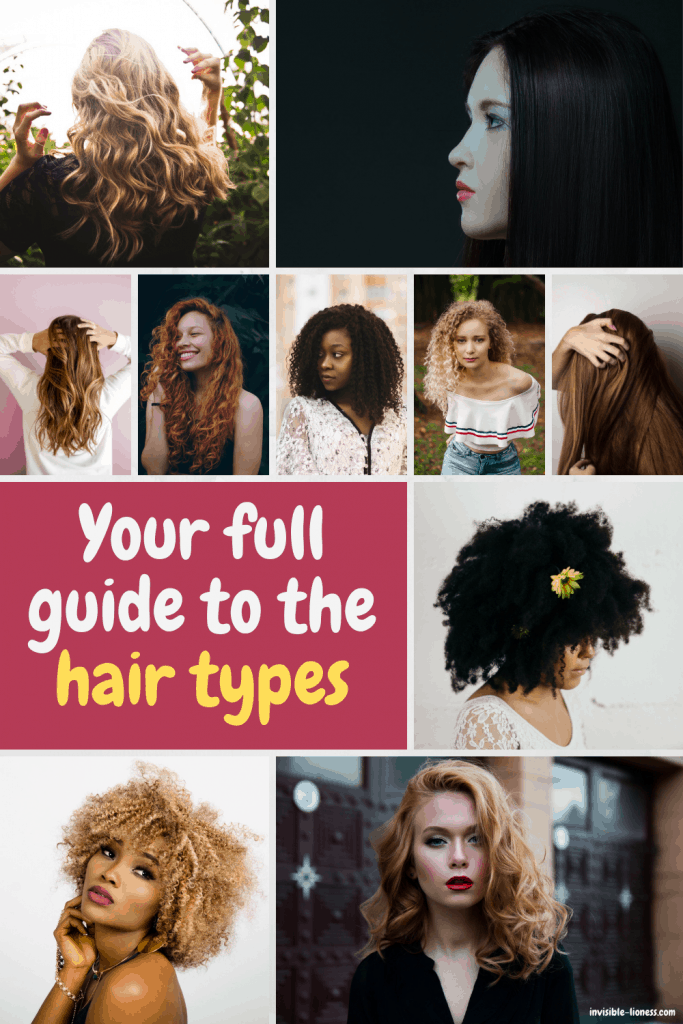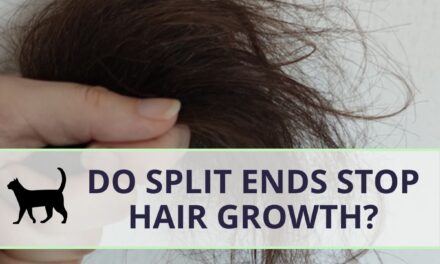No matter where you look for hair care advice: sooner or later you will stumble on tips and products for specific hair types. Sentences like: “This is perfect for hair types 3 and 4!”
If so far these words have been rather mysterious to you, don’t worry. Behind those hair types is not some
In this guide, you’ll learn everything you need to know about what the hair structure types are, why they matter, and, of course, how you can find out your very own hair type.
What are all the hair types?
This most used hair typing systems contain 4 major hair types, conveniently called hair types 1,2,3, and 4.
The types distinguish different hair textures and are differentiated even further into 3 subtypes a,b, and c each.
To give you an easy overview before we dive deeper into each hair type, have a look at the following hair type chart:

You might notice that, in this hair structure chart, hair types 1b and 1c are missing. Don’t worry, I did not forget them. But looking at a single strand of hair, it is pretty much impossible to distinguish hair types 1a,b, and c. To understand more about how to separate the straight hair types, read the detailed description below.
The straight hair types: Hair type 1
Straight hair is classified under hair type 1. These hair types get a greasy scalp much faster than other hair types, as their hair often doesn’t soak up as much as the drier hair types.
Related: 10 ways to stop your hair from getting oily so quickly
Hair type 1a
Hair type 1a is the “bone straight” kind of hair. It’s the effect people try to achieve when they flat iron their poor locks to death. While many people are jealous of these super sleek manes, the owners usually complain about a lack of volume and “life” to their hair.
Unfortunately, I couldn’t even find a good image of this one, as every last one of them added at least a little movement to the hair. But you know this hair type. Straight as a stick. Super sleek.
Hair type 1b

Next in line is hair type 1b. It’s still clearly straight, but has a little more movement, giving it more volume than type 1a.
Hair type 1c

Hair type 1c is the first one to add a tiny little bit of wave to their structure. While the hair, in general, is still straight, you might find a couple of soft S-shaped waves at the nape of your neck or on your temples.
Related: How you can adapt the Curly Girl Method for straight hair
The wavy hair types: Hair type 2
Hair type 2 summarises all wavy manes. Starting from here, all following hair types can benefit from the curly girl method to give their hair a more cohesive, wavy or curly structure. They also struggle with frizz, which isn’t really a problem for hair type 1.
Related: How to get rid of frizz – the ultimate guide
Hair type 2a

Hair type 2a is almost more a hybrid of straight and wavy hair. It looks mostly straight but you can see very loose S-shaped waves all throughout.
This hair type very often struggles with how to treat their hair, as it can be a challenge to get a cohesive look.
Hair type 2b

The classic beach waves are what you would call hair type 2b. The waves are clearly visible and shorter than the ones of 2a. It’s also the effect you get from many heatless curling methods, like loosely braiding damp hair and letting it dry like that.
Hair type 2c

Hair type 2c is close to being curly already. It has the clear S-shaped waves from 2b, but you’ll find the occasional “proper curl” throughout.
In case you are wondering how to distinguish between the two: Curls twist around themselves, like a spiral. That’s the typical “curl structure”, if you will. Waves do not have that twist.
Related: How long to plop wavy hair & what else to watch out for
Curly hair: Hair type 3
By now you probably already know what to expect next: Hair type 3 summarizes the curly hair types.
Curly hair usually needs more moisture than it naturally gets from your scalp’s sebum production. Due to the dryness, it’s also more prone to damage, and frizz becomes a real problem.
This hair type, together with the following hair type 4, is also way more likely to have naturally high porosity. (If you have have no idea what that means for your hair care, read all about hair porosity here!)
And yes, there are differences between each curly hair structure and the others!
Related: The best high porosity hair products
Hair type 3a

Hair type 3a has “proper” curls, instead of waves, but they are rather big and loose. These curls easily lose their shape and pattern, so for this hair type to look their best, I really recommend following the curly girl method.
Related: The best curly girl approved products
Hair type 3b

The ringlets of hair type 3b are clearly curly. They are tighter than 3a’s curls and bouncier. No more being mistaken for waves with this hair type.
Hair type 3c

Hair type 3c has really tight corkscrew curls. Latest at this hair type you need to take moisturizing
Kinky, coily, awesome: Hair type 4
Last, but not least, hair type 4 summarises all very curly hair types. These are the kinds of locks were growing your hair out becomes a real challenge. Curly hair already deals with shrinkage, but hair type 4 goes into a whole new dimension with this!
Hair type 4 also gets damaged quite easily, meaning it needs a lot of care. Perfect protein-moisture balance is key for this hair type!
Related: What you need to know about protein on your hair
Hair type 4a

If you have S-shaped curls that coil up really tightly, your hair type is 4a.
Hair type 4b

This hair type, 4b, is very similar to 4a in that it’s also tightly coiled, but instead of S-shapes, your curls follow a sharp Z-pattern.
Hair type 4c

Hair type 4c is more difficult to describe, as it doesn’t follow as clear a pattern as the other types. It features mostly Z-patterns and is very, very tightly coiled.
How do you determine your hair type?
So now that you have a good idea of what the different hair types are, you need to know how you can determine your own hair type. After all, your hair isn’t the same every day, right?
Mine can look like anything between types 2 and 3 rather easily, depending on what I do with it.
But, of course, your hair type isn’t dependent on your styling methods. Instead, it refers to how your hair naturally behaves, without any straightening, scrunching, plopping, braiding, and so on.
So to determine your real hair type, take the following steps:
- Wash your hair as usual.
- Unless you already know that your hair is very curly, do not use any conditioner, as that influences your hair texture. For curly hair, a normal conditioner is okay.
- Detangle your hair before or during the wash. No more brushing or combing once you’re done!
- Air dry your hair without using any “shapeshifting” methods. No combing, plopping, scrunching et cetera.
- (optional) Take a picture so you can see your hair from behind as well.
- Now, look both at single hair strands and your hair as a whole “body”. Compare it to the hair type chart and the descriptions above. Which one fits best?
One thing to keep in mind while you try to determine your hair type is that it is absolutely possible to have a “mixed” type.
Some people have predominantly wavy hair with a few “real” curls mixed in. In that example, they would be a 2c-3a mix type.
So don’t take the hair typing too religiously. It will help you understand your structure better, but it’s a guiding system rather than a strict rule.
Got any more questions about the hair types?
So now you know all the basics about the 4 different hair types. How did it go for you? Did this hair type list help you understand your own hair type a little better?
If you have any more questions or remarks on the matter, make sure to leave me a comment. And, as always, remember to share this with someone!





